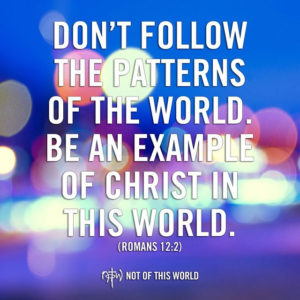P’kudei (Exodus 38:21 – 40:38)
“The Lord said to Moses, ‘On the first day of the first month,
you are to set up the tabernacle, the tent of meeting.’” (Exodus 40:1-2).
George Bernard Shaw once said, “Imitation is not just the sincerest form of flattery – it’s the sincerest form of learning.” As the fabrication of the elements of the tabernacle were completed, the Lord instructs Moses to consecrate Aaron and his sons for their positions as priests among the children of Israel for a period of seven days (Ex. 29:35); on the eighth day they would begin their ministry (Lev. 9). It was during this seven-day period of consecration that Aaron and his sons learned, not only the service of the tabernacle – its sacrifices and offerings – but also how the tabernacle was assembled. They learned this by observing Moses, and they would later imitate him as they matured into their ministry. The rabbis explained that over the seven days of consecration that Moses assembled and disassembled the tabernacle before the eyes of Aaron and his sons – a feat that is actually physically impossible for one man to accomplish.
The priests of Israel did not flatter Moses by imitating him, rather, they fulfilled their solemn duty and learned the pattern of ministry established in heaven. Imitation in our modern culture is often frowned upon – as it is considered “unoriginal.” Yet, in biblical faith imitation of the Lord, Yeshua/Jesus, and elders in the faith is considered a serious matter indeed; as Messiah said, “A new commandment I give to you, that you love one another; just as I have loved you, you also are to love one another (Jn. 13:34; cf. Matt. 16:24). To fulfill this commandment, we must consider closely just how he loved us, and how to replicate his actions of love. Additionally, we can consider these examples:
“Be imitators of me, as I am of Christ” (1 Cor. 11:1; cf. 1 Cor. 4:16; Eph. 5:1).
“For to this you have been called, because Messiah also suffered for you, leaving you an example, so that you might follow in his steps” (1 Pet. 2:21).
“Whoever says he abides in him ought to walk in the same way in which he walked” (1 Jn. 2:6).
“Brothers, join in imitating me, and keep your eyes on those who walk according to the example you have in us” (Phil. 3:17; cf. 1 Thess. 1:6).
“Therefore be imitators of God, as beloved children. And walk in love, as Messiah loved us and gave himself up for us, a fragrant offering and sacrifice to God” (Eph. 5:1-2).
“What you have learned and received and heard and seen in me – practice these things, and the God of peace will be with you” (Phil. 4:9).
When we consider the above examples from Scripture, we find the same pattern at work in the New Testament model, as we do in the Levitical model; and this for good reason, as the priesthood of Messiah was the original pattern that Moses witnessed upon Mt. Sinai. Just as Aaron and his sons watched and closely observed how to administer the ministry of reconciliation, the Body of Messiah must also closely watch, observe and pattern itself on the examples of godly faith that have come before – both biblical, historic and contemporary.
The key is that we must, as much as possible, follow the pattern. In Exodus 40:34, when the tabernacle and its furnishing were properly set according to the pattern shown to Moses, the presence of the Living God filled the tabernacle and dwelt among his people. Following that same pattern, whenever two or more are gathered in the name of Messiah Yeshua/Jesus, he is in their midst – the fullness of his prophetic name Emmanuel – God with us, God among us, and God in us.
Be well, shalom;
Dr. J.D. Elwell
